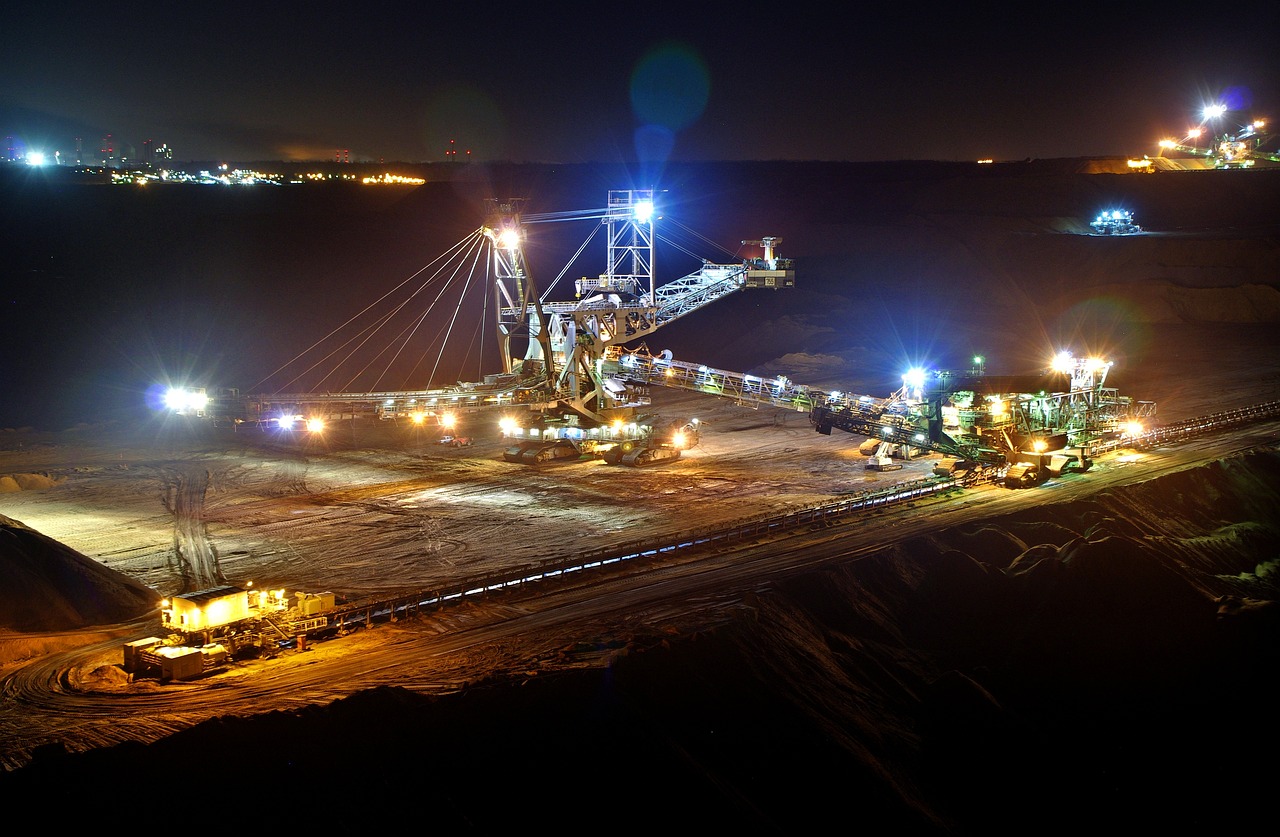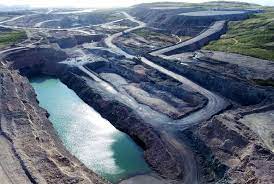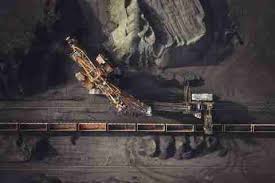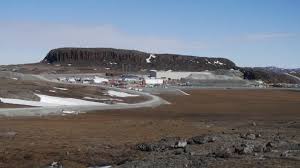Canadian Mine For Sale : 5 Lucrative Opportunities

Welcome to the world of Canadian Mine For Sale, where vast landscapes hold the promise of rich mineral resources waiting to be unearthed. In this article, we delve into the opportunity of acquiring a Canadian mine. Offering an overview of the industry, a detailed examination of the mine for sale, and insights into the financial, legal, and environmental considerations, this article provides a comprehensive guide for investors looking to explore the potential of Canadian mining ventures. Let’s embark on this journey to uncover the possibilities within the Canadian mining landscape.
Introduction to Canadian Mining Industry

Canada has long been recognized as a global leader in the mining sector, boasting a rich history of mineral exploration and production. In this section, we provide an overview of the Canadian mining industry, highlighting its significance, key mineral resources, regulatory framework, and economic impact.
1.1 Significance of the Canadian Mining Industry:
- The mining industry plays a pivotal role in the Canadian economy, contributing significantly to GDP, employment, and exports. Canada is home to a diverse range of mineral deposits, including precious metals, base metals, industrial minerals, and energy resources, making it a key player in the global mining landscape.
1.2 Key Mineral Resources:
- Canada is endowed with abundant mineral resources, including gold, copper, nickel, zinc, uranium, diamonds, potash, and rare earth elements. These resources are distributed across various regions, from the gold-rich provinces of Ontario and Quebec to the base metal deposits of British Columbia and the diamond mines of the Northwest Territories.
1.3 Regulatory Framework:
- The Canadian mining industry operates within a robust regulatory framework designed to ensure responsible resource development, environmental protection, and Indigenous engagement. Federal and provincial governments oversee mining activities through legislation, regulations, permitting processes, and environmental assessments.
1.4 Economic Impact:
- The mining industry contributes significantly to Canada’s economy, generating billions of dollars in revenue, taxes, and royalties each year. Mining projects stimulate economic growth, create jobs in remote and rural communities, and support downstream industries such as manufacturing, construction, and transportation.
1.5 Innovation and Sustainability:
- Canada’s mining sector is characterized by innovation and sustainability initiatives aimed at enhancing productivity, efficiency, and environmental stewardship. Companies invest in research and development, adopt advanced technologies, and implement best practices to minimize environmental impacts, mitigate climate change risks, and promote social responsibility.
1.6 International Recognition:
- Canada’s mining industry enjoys international recognition for its high environmental and social standards, transparency, and responsible resource development practices. Canadian mining companies operate globally, leveraging their expertise, technical capabilities, and corporate social responsibility initiatives to drive sustainable development and community engagement in host countries.
1.7 Challenges and Opportunities:
- Despite its strengths, the Canadian mining industry faces challenges such as fluctuating commodity prices, regulatory complexities, Indigenous rights issues, and environmental concerns. However, these challenges also present opportunities for innovation, collaboration, and sustainable growth, positioning Canada as a competitive and resilient mining jurisdiction.
1.8 Future Outlook:
- The future of the Canadian mining industry is characterized by continued exploration, development, and investment in mineral resources. As global demand for metals and minerals grows, Canada remains well-positioned to capitalize on its mineral wealth, technological expertise, and commitment to responsible mining practices.
Overview of the Canadian Mine For Sale
The mine for sale presents a unique opportunity for investors to enter the Canadian mining sector or expand their existing portfolio. This section provides a detailed overview of the mine, including its location, size, mineral deposits, production history, and infrastructure.
- Location:
- The location of the mine is a crucial factor influencing its accessibility, logistics, and potential for development. Details regarding the province or territory in which the mine is situated, its proximity to transportation hubs, infrastructure, and local communities are essential considerations for investors.
- Size and Scope:
- Understanding the size and scope of the mine is vital for assessing its potential value and production capacity. Information about the total land area, mineral rights, reserves, and mining concessions associated with the property provides insights into the scale of operations and resource potential.
- Mineral Deposits:
- The primary focus of any mining venture is the mineral deposits present on the property. Detailed information about the types of minerals, ore grades, mineralization styles, and geological characteristics of the deposits is critical for evaluating the economic viability and potential profitability of the mine.
- Production History:
- Examining the production history of the mine offers valuable insights into its past performance, operational efficiency, and resource utilization. Data on historical production levels, ore grades, recovery rates, and operational challenges provide a basis for forecasting future production and revenue potential.
- Infrastructure and Facilities:
- Assessing the existing infrastructure and facilities associated with the mine is essential for understanding its operational capabilities and development opportunities. Details about mining equipment, processing plants, infrastructure, utilities, and support facilities provide insights into the mine’s readiness for production and potential for expansion.
- Environmental and Regulatory Considerations:
- Understanding the environmental and regulatory landscape surrounding the mine is crucial for assessing compliance requirements, permitting processes, and potential risks. Information about environmental permits, regulatory approvals, compliance history, and environmental impact assessments helps investors navigate regulatory hurdles and mitigate environmental risks.
- Market Dynamics and Demand:
- Evaluating market dynamics and demand for the minerals produced by the mine is essential for assessing market opportunities and potential profitability. Factors such as commodity prices, supply-demand dynamics, market trends, and global economic conditions influence the market outlook for minerals and impact the mine’s revenue potential.
- Operational Challenges and Opportunities:
- Identifying operational challenges and opportunities associated with the mine enables investors to develop strategies for optimizing production, reducing costs, and enhancing profitability. Understanding factors such as geotechnical risks, metallurgical challenges, labor issues, and infrastructure constraints helps investors mitigate risks and capitalize on opportunities for improvement.
Geological and Mineral Resources Assessment
Conducting a thorough geological and mineral resources assessment is essential for understanding the potential of the mine for sale and evaluating its investment attractiveness. This section outlines the key aspects of the assessment process, including geological mapping, mineral exploration, resource estimation, and technical analysis.
- Geological Mapping:
- Geological mapping involves the systematic examination and documentation of the geological features, structures, and rock formations within and around the mine site. Geologists analyze surface exposures, drill core samples, geological maps, and geophysical data to understand the geological history, mineralization processes, and structural controls influencing mineral deposits.
- Mineral Exploration:
- Mineral exploration activities aim to identify and delineate potential mineral deposits within the mine site through various exploration techniques. These techniques may include geological mapping, geochemical sampling, geophysical surveys, drilling, and remote sensing. Exploration efforts focus on targeting areas with favorable geological characteristics and potential mineralization.
- Resource Estimation:
- Resource estimation involves quantifying the mineral resources present within the mine site based on geological data, exploration results, and statistical analysis. Qualified geologists and resource estimation specialists use geological models, drill hole data, assay results, and geostatistical methods to estimate the quantity, grade, and distribution of mineral resources, including measured, indicated, and inferred resources.
- Technical Analysis:
- Technical analysis encompasses a comprehensive review of geological, geochemical, geophysical, and metallurgical data to assess the technical feasibility and economic viability of mining operations. Technical experts evaluate factors such as ore grades, mineralogy, metallurgical characteristics, mining methods, processing technologies, infrastructure requirements, and environmental considerations to determine the technical challenges and opportunities associated with the mine.
- Risk Assessment:
- Conducting a risk assessment is essential for identifying and mitigating geological, technical, and operational risks that may affect the mine’s development and production potential. Geologists and technical experts assess risks such as geological uncertainty, resource estimation errors, metallurgical challenges, mining difficulties, environmental liabilities, regulatory constraints, and market volatility to develop risk mitigation strategies and contingency plans.
- Due Diligence:
- Performing due diligence on the geological and mineral resources assessment is critical for ensuring the accuracy, reliability, and completeness of the information used for investment decision-making. Investors, technical consultants, and geologists review the assessment methodologies, data sources, assumptions, and conclusions to validate the geological and technical aspects of the mine’s potential and identify any discrepancies or uncertainties that may impact investment decisions.
- Reporting and Disclosure:
- Transparent reporting and disclosure of geological and mineral resources assessments are essential for providing investors with accurate and reliable information about the mine’s potential and risks. Companies preparing technical reports, such as National Instrument 43-101 (NI 43-101) reports, adhere to regulatory standards and guidelines for reporting mineral resources and reserves, including clear disclosure of assumptions, limitations, and qualifications.
Financial Analysis and Valuation

Financial analysis and valuation play a crucial role in assessing the investment potential of a Canadian mine for sale. This section outlines the key components of financial analysis and valuation methodologies used to evaluate the mine’s financial performance, cash flow projections, and investment attractiveness.
- Financial Statements Analysis:
- Financial statements analysis involves examining the mine’s historical financial performance, including income statements, balance sheets, and cash flow statements. Investors analyze key financial metrics such as revenue, expenses, profitability margins, asset utilization, liquidity ratios, and debt levels to assess the mine’s financial health, stability, and growth prospects.
- Cash Flow Projections:
- Cash flow projections forecast the future cash inflows and outflows associated with the mine’s operations over a defined period. Investors use cash flow models to estimate operating cash flows, capital expenditures, taxes, and financing activities based on production forecasts, commodity prices, operating costs, and capital investments. Cash flow projections help investors assess the mine’s ability to generate positive cash flows and fund ongoing operations, debt service, and capital expenditures.
- Discounted Cash Flow (DCF) Analysis:
- Discounted cash flow (DCF) analysis is a valuation method used to estimate the present value of a mine’s future cash flows. Investors discount projected cash flows back to their present value using a discount rate that reflects the time value of money and the risk associated with the investment. DCF analysis provides a quantitative measure of the mine’s intrinsic value and helps investors determine whether the asking price is justified based on expected returns and risk-adjusted discount rates.
- Comparable Company Analysis (CCA):
- Comparable company analysis (CCA) involves comparing the financial performance and valuation metrics of the mine for sale to similar mining companies or assets in the industry. Investors assess key financial multiples such as price-to-earnings (P/E) ratio, enterprise value-to-EBITDA (EV/EBITDA) ratio, and price-to-net asset value (P/NAV) ratio to determine the mine’s relative valuation compared to its peers. CCA provides insights into market valuation trends, industry benchmarks, and competitive positioning.
- Net Asset Value (NAV) Analysis:
- Net asset value (NAV) analysis calculates the value of the mine’s underlying assets, including mineral reserves, land, infrastructure, and equipment, net of liabilities. Investors estimate the NAV per share or unit by dividing the total net asset value by the number of outstanding shares or units. NAV analysis provides a conservative estimate of the mine’s intrinsic value based on its tangible assets and can serve as a floor valuation for the investment.
- Sensitivity Analysis:
- Sensitivity analysis assesses the impact of changes in key assumptions, variables, and market conditions on the mine’s financial performance and valuation metrics. Investors analyze sensitivity scenarios related to commodity prices, production volumes, operating costs, discount rates, and other factors to evaluate the mine’s resilience to potential risks and uncertainties. Sensitivity analysis helps investors understand the range of potential outcomes and assess the robustness of their investment thesis.
- Risk Assessment and Mitigation:
- Evaluating investment risks and implementing risk mitigation strategies is essential for safeguarding investor capital and maximizing risk-adjusted returns. Investors identify and assess various risks associated with the mine, such as geological risks, technical risks, commodity price volatility, regulatory risks, environmental liabilities, and market risks. Mitigation strategies may include diversification, hedging, insurance, contingency planning, and contractual protections.
- Due Diligence:
- Conducting thorough due diligence on the mine’s financial performance, projections, and valuation assumptions is critical for validating the investment thesis and mitigating risks. Investors, financial analysts, and valuation experts review financial statements, cash flow models, valuation reports, and underlying assumptions to ensure the accuracy, reliability, and completeness of the financial analysis and valuation.
Legal and Regulatory Considerations
Navigating the legal and regulatory landscape is essential when considering the acquisition of a Canadian mine. This section outlines the key legal and regulatory considerations that investors should address during the due diligence process and throughout the acquisition transaction.
- Mining Laws and Regulations:
- Understanding the mining laws and regulations applicable to the jurisdiction in which the mine is located is critical. Each province and territory in Canada has its own mining legislation, which governs mineral exploration, development, production, and reclamation activities. Investors must familiarize themselves with the relevant laws, regulations, permits, and licenses governing mining operations to ensure compliance and mitigate regulatory risks.
- Environmental Regulations:
- Environmental regulations play a significant role in the mining industry, aiming to minimize the environmental impact of mining operations and ensure responsible resource development. Investors must assess compliance with environmental laws, regulations, and permitting requirements related to air and water quality, waste management, reclamation, biodiversity conservation, and environmental assessments. Conducting environmental due diligence helps identify potential environmental liabilities, remediation obligations, and compliance risks associated with the mine.
- Permitting and Approvals:
- Obtaining the necessary permits and approvals is a crucial step in the development and operation of a mine. Investors should review the mine’s permitting status and ensure that all required permits, licenses, and authorizations are in place and up to date. This includes exploration permits, mining leases, environmental permits, water licenses, land use permits, and other regulatory approvals. Delays or deficiencies in permitting can impact project timelines, operational costs, and investment returns.
- Aboriginal and Indigenous Consultation:
- Consultation and engagement with Indigenous communities are essential aspects of the mining approval process in Canada, particularly where mining activities may affect Indigenous rights, lands, or interests. Investors must adhere to legal requirements for meaningful consultation and accommodation, as outlined in Indigenous rights and consultation policies, treaties, land claims agreements, and court decisions. Building positive relationships with Indigenous communities through transparent communication, engagement, and benefit-sharing agreements is key to securing social license and mitigating project risks.
- Title and Ownership Rights:
- Clarifying title and ownership rights to the mineral claims, mining leases, and surface rights associated with the mine is essential for confirming legal ownership and securing access to mineral resources. Investors should conduct title searches, due diligence reviews, and legal assessments to verify ownership, resolve any title disputes or encumbrances, and ensure clear and marketable title to the mining assets.
- Contracts and Agreements:
- Reviewing contracts and agreements related to the mine’s operations, including mining agreements, joint venture agreements, offtake agreements, royalty agreements, and supply contracts, is critical for understanding rights, obligations, and liabilities affecting the investment. Investors should assess the terms, conditions, and legal implications of existing contracts, negotiate any necessary amendments or novations, and ensure that contractual arrangements support the investment objectives and risk management strategies.
- Taxation and Royalties:
- Evaluating the taxation and royalty regime applicable to the mine is essential for assessing the financial implications and investment returns. Investors should consider corporate income taxes, mining taxes, resource royalties, and other fiscal obligations imposed by federal, provincial, and municipal governments. Understanding tax incentives, deductions, and credits available to mining companies can help optimize tax planning and maximize after-tax returns on investment.
- Legal Due Diligence:
- Conducting legal due diligence on the mine’s legal and regulatory compliance, contractual obligations, title rights, environmental liabilities, and permitting status is critical for identifying legal risks and liabilities that may impact the investment. Legal advisors, mining lawyers, and regulatory experts conduct comprehensive reviews of legal documentation, regulatory filings, permits, agreements, and government correspondence to assess the legal soundness of the investment and identify any potential legal challenges or red flags.
Marketing and Advertising the Sale

Effectively marketing and advertising the sale of a Canadian mine is crucial for attracting potential buyers and maximizing the visibility and value of the opportunity. This section outlines strategies and considerations for marketing and advertising the sale of the mine to potential investors.
- Develop a Marketing Strategy:
- Before initiating the sale process, it’s essential to develop a comprehensive marketing strategy outlining the objectives, target audience, messaging, channels, and tactics for promoting the sale. The marketing strategy should align with the investment objectives, timing, and budget constraints while maximizing exposure and generating interest from potential buyers.
- Create Marketing Materials:
- Develop professional marketing materials to showcase the mine’s attributes, investment highlights, and potential value proposition. This may include a detailed investment memorandum, presentation materials, brochures, fact sheets, virtual tours, videos, and online listings. High-quality visuals, maps, geological data, financial projections, and market analysis can enhance the attractiveness of the investment opportunity and convey key information to investors.
- Utilize Online Platforms:
- Leverage online platforms and digital marketing channels to reach a broader audience of potential investors. List the mine for sale on reputable industry websites, online marketplaces, and brokerage platforms specializing in mining investments. Utilize social media platforms, targeted advertising campaigns, email marketing, and search engine optimization (SEO) strategies to increase visibility and drive traffic to the sale listing.
- Engage with Industry Networks:
- Engage with industry networks, professional associations, and investment forums to promote the sale of the mine within the mining community and among potential investors. Participate in industry events, conferences, webinars, and networking forums to showcase the investment opportunity, connect with industry stakeholders, and generate leads. Building relationships with mining investors, operators, financiers, and advisors can facilitate introductions and referrals to qualified buyers.
- Targeted Outreach to Investors:
- Conduct targeted outreach to potential investors who may have an interest in acquiring a Canadian mine. This may include institutional investors, private equity firms, mining companies, high-net-worth individuals, and strategic investors seeking exposure to the mining sector. Tailor marketing messages and outreach efforts to address the specific needs, preferences, and investment criteria of target investors.
- Engage with Investment Advisors:
- Collaborate with investment advisors, financial intermediaries, and brokerage firms specializing in mining investments to facilitate the sale process and reach qualified buyers. Investment advisors can leverage their networks, expertise, and deal-making capabilities to identify potential buyers, conduct outreach, facilitate negotiations, and structure the transaction to maximize value for both parties.
- Provide Information and Due Diligence Support:
- Respond promptly to inquiries from potential investors and provide them with access to relevant information, due diligence materials, and site visits to evaluate the investment opportunity. Ensure transparency, accuracy, and confidentiality in sharing information and address any questions or concerns raised by investors in a timely and professional manner. Offering due diligence support and assistance throughout the evaluation process can build trust and confidence among potential buyers.
- Facilitate Investor Meetings and Presentations:
- Arrange investor meetings, presentations, and site visits to showcase the mine’s potential, address investor questions, and facilitate discussions about the investment opportunity. Prepare informative presentations, data room access, and management meetings to provide investors with a comprehensive understanding of the mine’s attributes, operational performance, growth prospects, and investment rationale.
- Negotiate Offers and Close the Sale:
- Work closely with potential buyers to negotiate offers, terms, and conditions that align with the seller’s objectives and maximize the value of the transaction. Facilitate due diligence reviews, legal negotiations, and transaction structuring to finalize the sale agreement and facilitate the transfer of ownership. Collaborate with legal advisors, financial experts, and transaction professionals to ensure a smooth and successful closing process.



Leave a Reply
You must be logged in to post a comment.